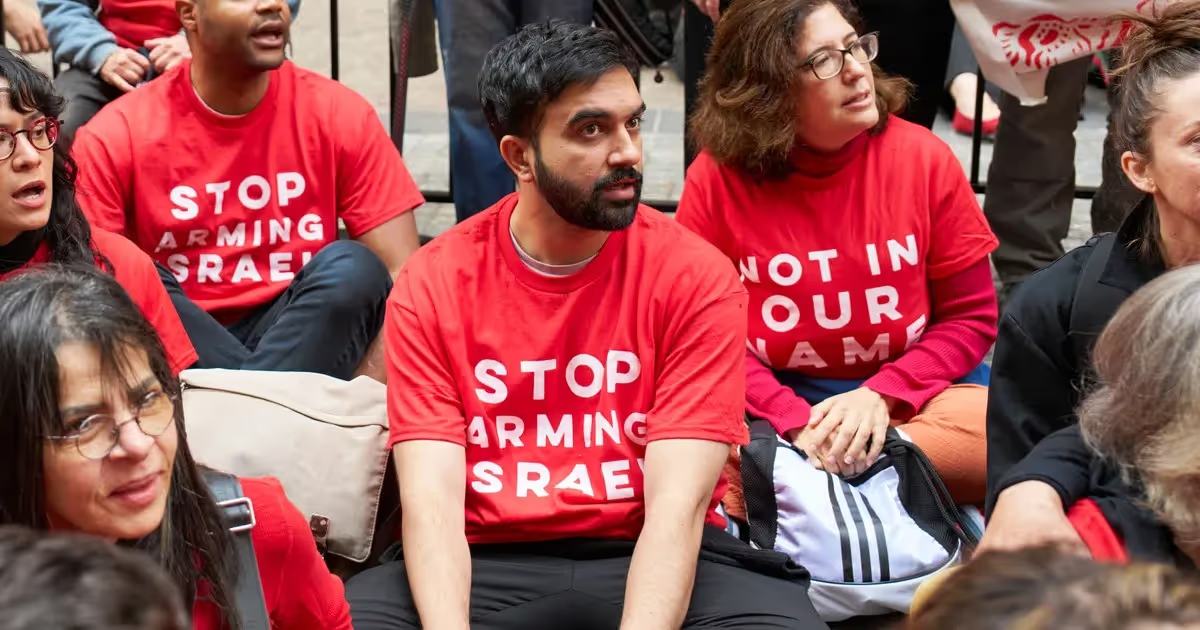Mamdani’s win is not a replay of Chicago’s progressive playbook. If there’s a critical lesson to be learned, it’s to recognize that political power — and its limits — are ultimately determined by results
Mayor Brandon Johnson and his progressive allies in Chicago may be tempted to see Zohran Mamdani’s decisive victory in the New York City Democratic mayoral primary as a blueprint for their own political future. But Mamdani’s win is not a simple replay of Chicago’s progressive playbook. It is in many ways a singular event, shaped by unique demographic trends, grassroots momentum, and the collapse of a scandal-weary establishment.
Mamdani, a 33-year-old democratic socialist and state assemblyman from Queens, defeated former Governor Andrew Cuomo by a 12-point margin — 56 percent to 44 percent — after ranked-choice tabulations. Cuomo’s campaign, despite establishment backing and deep resources, was hampered by the lingering shadow of his resignation and a lack of compelling new ideas. As strategist Lis Smith observed, the primary became “the last gasp of the establishment and the affiliated billionaires trying to stop a grassroots movement that, frankly, they helped fuel.”
Demographic shifts were decisive. Mamdani’s campaign stood out for its discipline and ability to mobilize New York’s rapidly growing immigrant communities, particularly Asian and Muslim voters. Asian Americans, now over 1.5 million strong and the fastest-growing racial group in New York City, played a pivotal role: Mamdani won majority-Asian precincts by 15 percentage points. The city’s Muslim population, now nearly nine percent of residents, was similarly influential, with Mamdani campaigning extensively in their neighborhoods.
These new coalitions have largely replaced the white ethnic voters who have moved to Florida, Long Island, and beyond. There has also been an exodus of middle-income Black families with children, who have left for other cities and neighboring states in search of less crime, better schools, and lower taxes. Chicago has seen a similar result. Between 2000 and 2020 the number of Black adults declined 14 percent while the number of Black children, age 17 and younger, fell by 49 percent.
Mamdani also drew significant support from white progressives and younger voters, while Cuomo dominated among Black and Latino voters. Mamdani clearly stood out among these voters not only because of his leftist appeal reflected in his socialist solutions to addressing the high cost of living in New York, especially his offer to freeze rents, but also because his opposition to Israel’s campaign in Gaza. These voters are most opposed to Democratic Party support for Israel.

By contrast, Chicago’s Asian population is smaller — about eight percent of the city, or roughly 190,000 people. While the Asian community in Chicago is growing, it does not yet have the numerical weight to anchor a coalition like Mamdani’s. Still, the lesson is clear: “progressive, immigrant-led coalitions are gaining influence in America’s largest cities, especially where traditional political party machines are in retreat.”
Mamdani’s campaign focused on tangible issues — housing, transportation, and economic opportunity — rather than the divisive cultural debates that often alienate working-class voters. His populist agenda, including promises of free bus rides, rent stabilization, and a $30 minimum wage, resonated powerfully in a city where over half of residents are renters and economic anxiety is widespread. He avoided “woke” rhetoric, instead emphasizing affordability and opportunity, which allowed him to build a broad, multiracial coalition.
Looking ahead, Mamdani’s ambitious proposals — such as higher property taxes on wealthy neighborhoods and radical redistribution — will face significant institutional checks. New York’s city charter includes robust checks and balances, an independent budget office, and strict accounting rules that will constrain his ability to enact sweeping change. Chicago, by contrast, gives its mayor far more latitude to redirect finances, with a city council that lacks the expertise and statutory authority for effective oversight.
Mamdani’s insurgent candidacy was not endorsed by the Democratic establishment, but he was able to outmaneuver his rivals through superior grassroots organizing and a clear, compelling message. By contrast, in Chicago Mayor Johnson, beginning in the primary election, benefited from the strong support of his former employer the Chicago Teachers Union and the Service Employees International Union. Their members constitute the core of the Democratic Party’s foot shoulders. He also had the support of Cook County Board President and Democratic Party Boss Toni Preckwinkle.
Since taking office, Johnson has faced criticism for divisive rhetoric and for prioritizing new migrant funding over the needs of long-standing Black and Latino residents. While Mamdani avoided polarizing language, Johnson and his allies have often framed opposition as motivated by racism, seeking to rally their largest voting bloc: Black Chicagoans, who now make up about 29 percent of the city’s registered voters. Still a sizable but significantly diminished voting block.
Johnson’s recent uptick in approval ratings, buoyed by anti-Trump rhetoric and a reduction in violent crime, may not be enough to secure his standing in a crowded or competitive field. Chicago’s recent decline in homicides and shootings has only now begun to mirror the national trend since the end of pandemic restrictions and the reopening of schools. The city through July 5 still leads the nation in murders with 214, shootings with 746 and 30 mass shootings — a grim national benchmark. Chicago has a homicide rate nearly five times that of New York and more than twice that of Los Angeles.
Chicago faces a dire fiscal outlook: A total budget deficit projected at almost $1 billion for 2025, a Chicago Public Schools deficit exceeding $700 million, and a looming CTA deficit approaching $600 million. These gaps will likely force significant property tax hikes and a host of other tax and fee increases, making the city increasingly unaffordable for residents and businesses alike.
Mamdani’s victory is a product of a Democratic Party whose progressive-immigrant, far-left coalition has become dominant in an increasing number of big cities, challenging the traditional Democratic establishment, and bound together by the concerns and grievances of a growing number of individual groups and factions. It found fertile ground in a New York driven by economic anxiety and fatigue with a political establishment for which Cuomo, for many, was the personification.
While progressive, immigrant-led coalitions are reshaping urban politics, there are unique demographic and institutional realities of each city. If there’s a critical lesson to be learned it is to recognize that political power — and its limits — are ultimately determined by results. Chicagoans are showing signs of Johnson fatigue, frustrated by his divisiveness, excuse making and the general lack of results in addressing the city’s most critical issues. The rising costs of living, lack of affordable housing, absence of quality school choices, and, yes, unsafe neighborhoods and public transportation.

